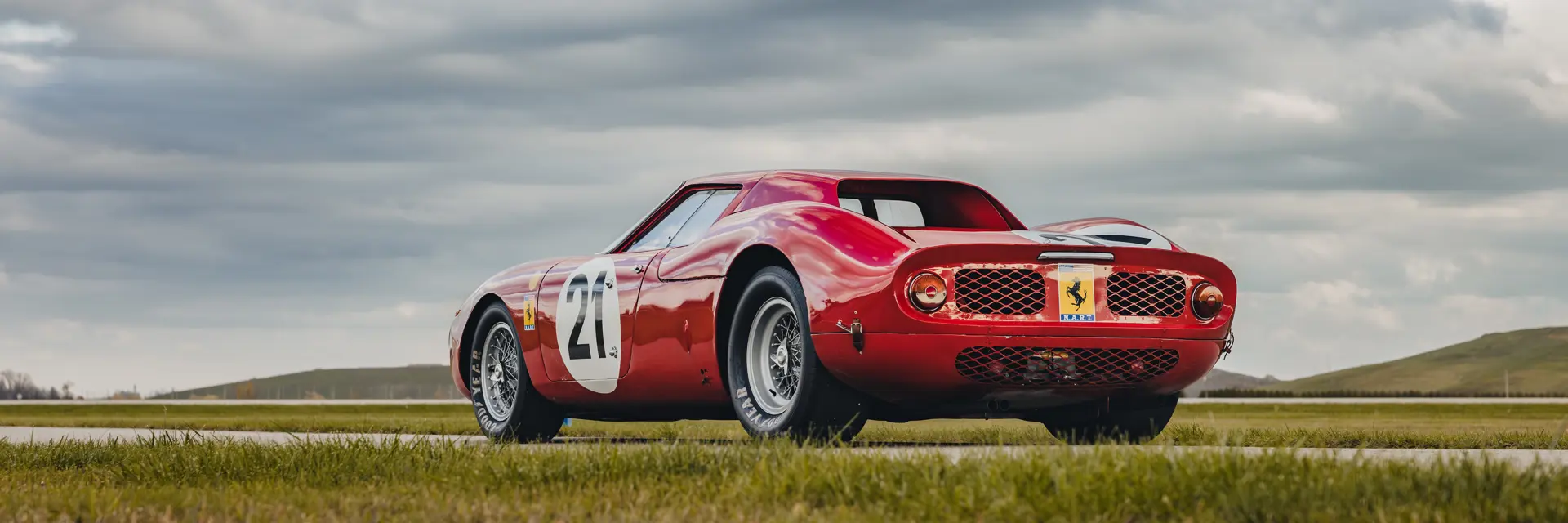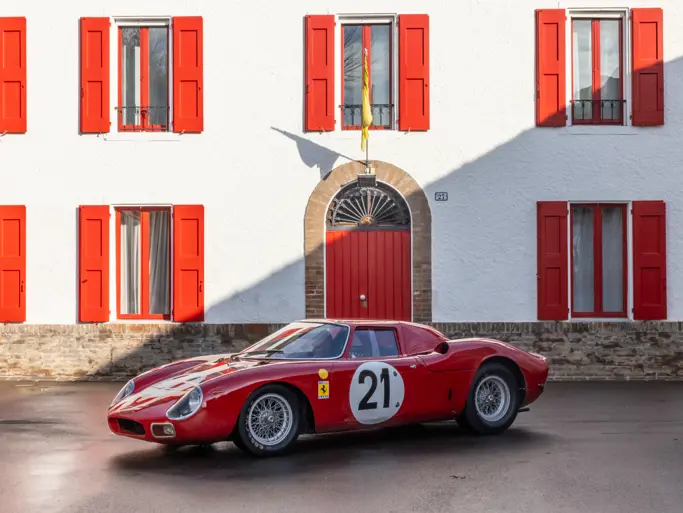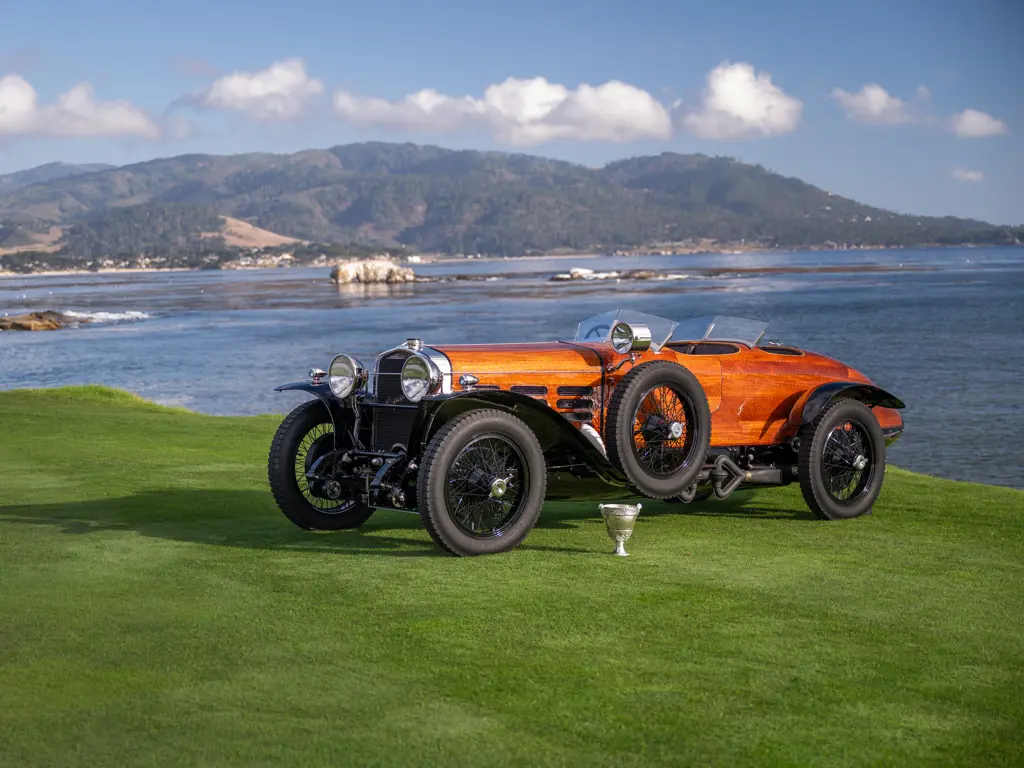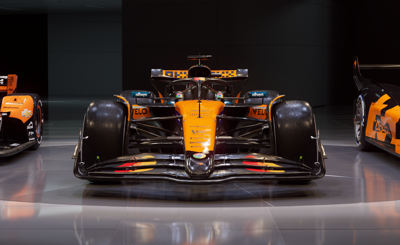It should never have happened. Back in 1965, if you'd taken a bet on Ferrari 250 LM chassis 5893 winning that year's 24 Hours of Le Mans, you'd have cleaned up handsomely. It was always expected to be an also-ran against the bigger guns from Ferrari and Ford, and some say that even its drivers, the experienced American ace Masten Gregory and the up-and-coming Austrian F2 star Jochen Rindt, had no faith in it. The reason they drove the car so hard and in doing so claimed ultimate victory is, so legend has it, because they expected it to break and they could take an early bath.
Win it did, however, and in doing so this privateer Ferrari, entered by Luigi Chinetti's North American Racing Team, marked the sixth consecutive outright win at Le Mans by a Ferrari—and, as it would transpire, Ferrari's last win until as recently as 2023. It also added a Le Mans win for Chinetti as an entrant to the three he'd already amassed as a driver. Chassis 5893 is by any standards a significant car. But it's also associated with one of the more bizarre incidents in Le Mans history: the mystery of 'the third man.' Did Gregory and Rindt win the race between them, or did they have the help of an unofficial third driver?
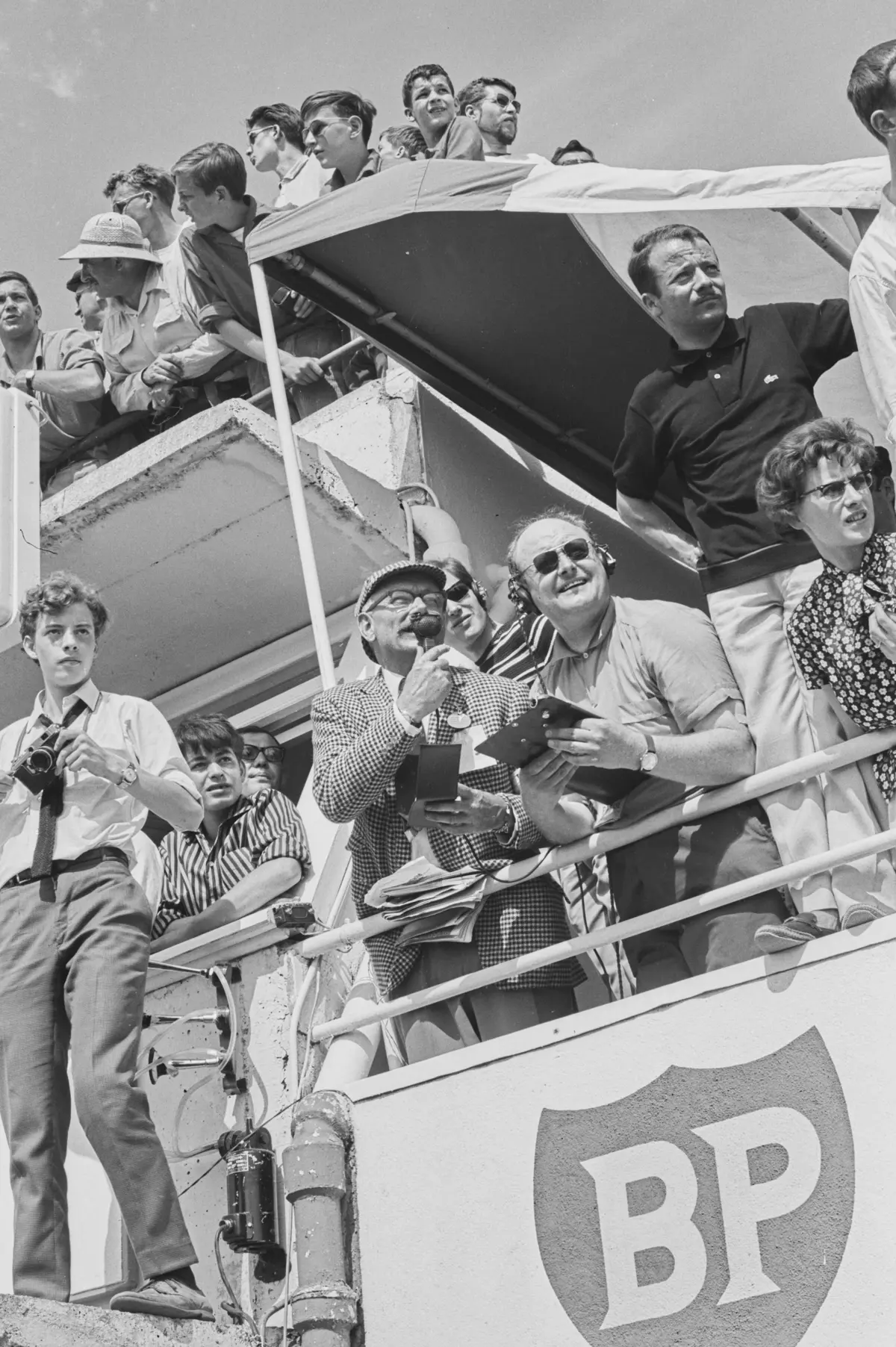
As a BBC newsreader would say, "More on that story later." Essentially a closed-coupé version of the open 250 P sports prototype, the 250 LM was designed as a mid/rear-engined replacement for the front-engined 250 GTO, using a similar 3.0-litre V-12 engine—just in a different position. Formula 1 cars had transitioned from front- to rear-engine configurations from the late 1950s, ever since Stirling Moss won the 1958 Argentine Grand Prix in a mid/rear-engined Cooper T43, and now sports racing cars were following suit. This was despite Enzo having been opposed to the concept originally, reputedly huffing that "the horse should pull the cart, not push it."
Trouble was, the racing authorities refused to homologate the 250 LM, on the very reasonable grounds that Ferrari had built barely a dozen out of the 100 cars required. Enzo had already had a run-in with the FIA back in 1962 when he came to homologate the 250 GTO, at a time when perhaps 25 examples had actually been made, but he successfully argued that the 250 GTO was merely a variant of his 250 SWB Berlinetta.
That argument clearly wouldn't wash this time, when the 250 LM was not just a different car but had its engine in a completely different position, and the FIA stood its ground. Ferrari debuted the 250 LM at the Paris Salon in October 1963 but the FIA would not homologate it, which hurt potential sales as a road car, and in turn, led to not enough examples being built for a second attempt at homologation. This meant that the 250 LM would have to run in the sports prototype rather than the GT racing class for which it had been intended and where it was most likely to shine.
Initially the 250 LM featured Ferrari's single-cam 2,953-cc V-12 with Testa Rossa cylinder heads and six twin-choke Webers, but this was upped in capacity to 3,286 cc by May 1964—further inflaming the homologation issue, since that effectively made the car a 275 LM. But Enzo, smarting from the deadlock over the 250's homologation, refused to change its nomenclature. Every cloud has a silver lining, however, because Ferrari's many customers continued to race the 250 GTO in the International Championship for GT Manufacturers and took the title for Ferrari in 1964.
The 250 LM would certainly have been a formidable force in the GT class. It was based on the open 250 P that had won Le Mans in 1963, after all. But for 1964 the opposition had suddenly become a lot more fierce, with Carroll Shelby and Ford launching a two-pronged assault with their Daytona Coupes and GT40s, the 'Blue Oval' still smarting from Enzo's last-minute rebuff during talks in 1963 about a proposed buy-out of Ferrari by Ford. For Le Mans in 1965, a 3.3-litre sports racing car—even one with Ferrari's recent pedigree—just didn't appear to be a contender against the sheer muscle of the six GT40s (two of them with 7-litre V-8s) and five Daytona Coupes.
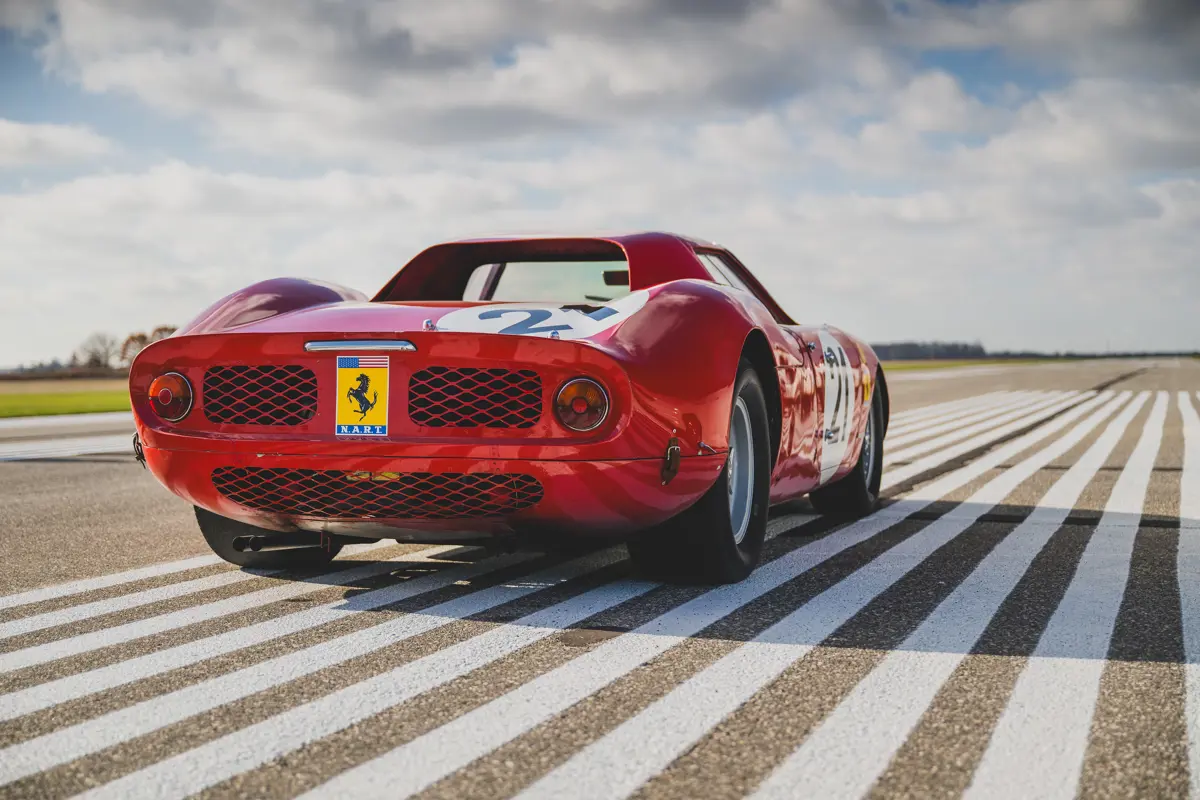
And that seemed to be borne out in practice for the event, when the NART-entered 250 LM, chassis 5893, was lapping 12 seconds slower than the 7-litre GT40 of Chris Amon and Phil Hill—equivalent to over an hour over the course of the race. There were actually five 250 LMs entered, all by privateers, but the Ferraris favoured for top honours included a trio of purpose-built 4-litre P2 prototypes.
It didn't help that neither driver of chassis 5893 seemed likely to set La Sarthe alight. Masten Gregory was a formidable and brave talent, but his career was already closer to its end than its beginning by 1965, while the youngster Jochen Rindt had only started racing in 1961. The latter was very much a last-minute hire, although he'd made his mark in Formula 2 and begun his first season in F1. In fact, he'd been due to race a NART 250 LM with David Piper for Chinetti at Le Mans in 1964—only for the car to retire on the first lap due to a broken oil pipe, before he even got to take the wheel.
The 1965 race began as expected, with the 7-litre GT40s blasting away from the pack. But, in classic tortoise and hare fashion, the tables were soon turned. The big Fords were heavy on fuel and had to pit more frequently, while their transmissions began to wilt from the sheer power and torque of their massive engines. The 4.7-litre versions also suffered mechanically (as did the similarly engined Daytona Coupes), and after seven hours none of the GT40s were still racing.

By this point the Works Ferraris were in the top three places, ahead of Maranello Concessionaires' privateer 365 P2 in 4th. But as night fell, the 24 Hours' notorious attrition started to have an impact on them, too. All the P2s began to suffer from over-cooling of their new-style brake discs, which led to cracking and delays while the discs were changed. The Maranello car retired due to a broken exhaust almost poisoning driver Jo Bonnier. The works P2 of Mike Parkes and Jean Guichet got stuck in fifth gear. The Ferraris that didn't have any serious issues (yet) were the five privately entered 250 LMs.
Not that the Ferrari’s race had been without incident so far. Gregory came into the pits after his first stint, with the V-12 running on six cylinders; the problem was eventually traced to a faulty ignition condenser but it took 30 minutes to identify. The story goes that Rindt and Gregory decided they might as well go hell-for-leather to make up time, reasoning that since the car was unlikely to trouble the leaderboard, it wouldn't matter too much if it didn't last the distance.

Except that, as it happened, it did. While the bigger-engined prototypes were dropping like flies, the less-fancied of the Ferraris were faring rather better. By the halfway mark, the 250 LM entered and driven by Frenchman Pierre Dumay, partnered by Belgian Gustave "Taf" Gosselin, was leading. In 2nd place, but gaining on it after that 30-minute enforced delay, was NART 250 LM chassis 5893. Rindt and Gregory's reckless strategy was actually paying off.
Then Dumay's car suffered a blow-out on the Mulsanne Straight, severely damaging its bodywork. Dumay nursed his Ferrari back to the pits but, by the time it had been beaten back roughly into shape and rejoined the race, Rindt and Gregory had taken a five-lap lead. They never lost it, even though Gregory had to ease off slightly towards the very end to nurse a failing differential. He crossed the finish line still five laps ahead of Dumay and Gosselin, with the newly homologated 275 GTB of Willy Mairesse and Jean Blaton in 3rd place.
An incredible achievement, both for chassis 5893 and its drivers. But how many drivers were actually involved? Until 1999, the obvious and undisputed answer was 'two'—Rindt and Gregory. In that year, however, highly respected researcher János Wimpffen published his influential pictorial history Time and Two Seats, in which he mentioned that US racing driver Ed Hugus had taken over briefly from Masten Gregory during the early hours of Sunday morning.
This bombshell of a claim seemed to have originated from the ageing Hugus himself, a hugely experienced racer who had driven at Le Mans nine times and finished 7th there twice. In 1965 he had certainly been in the pits at Le Mans with the Chinetti team, after Ferrari had not delivered his own car in time for the race.
In May 2005, Hugus wrote to a French fan who'd asked him about his memories of the 1965 race: "As you know, I had my own entry for the 24Hrs for many years. This year [1965] I was to drive a Ferrari of Luigi Chinetti in the race. However, the factory did not finish the car in time, so Luigi put me on as reserve driver on the 250 LM. During the night about 4am? Masten had gone out in the LM. A lot of the famous Le Mans pea soup fog moved [?] and Masten with his bad eyesight and very thick glasses could not see well. Rindt had disappeared, no one knew where, so Luigi told me to get my helmet on and go. So I finished the last hour or so of Masten's part."
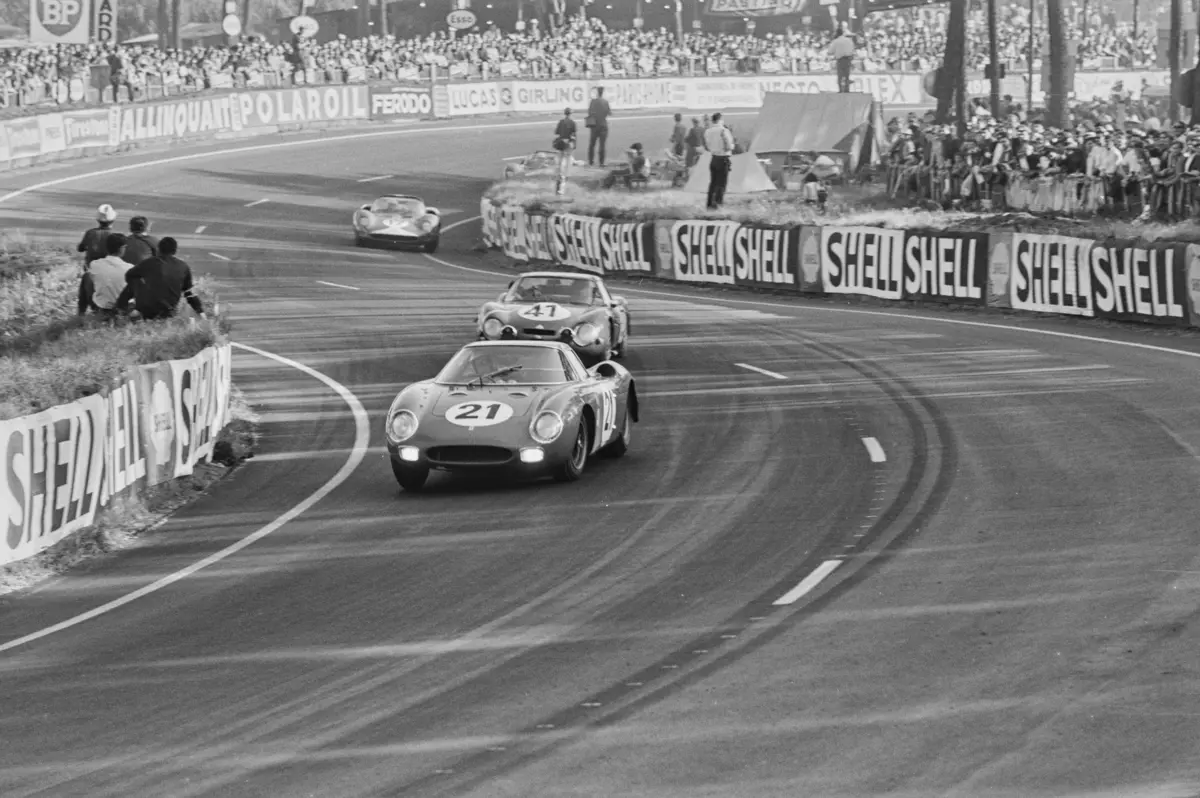
Hugus died in 2006, aged 82, but many years later legendary motor racing authority Doug Nye decided to investigate the matter. After consulting the official race archives, analysing pit stop times, lap speeds, and weather reports, he concluded in an article for Motor Sport magazine's July 2020 issue that Hugus could not have been telling the truth. "We emerge from the investigation 99 per cent sure that Ed Hugus' claim simply cannot stand," he declared.
"On the evidence, Masten Gregory and Jochen Rindt won Le Mans 1965, unrelieved by any other driver."
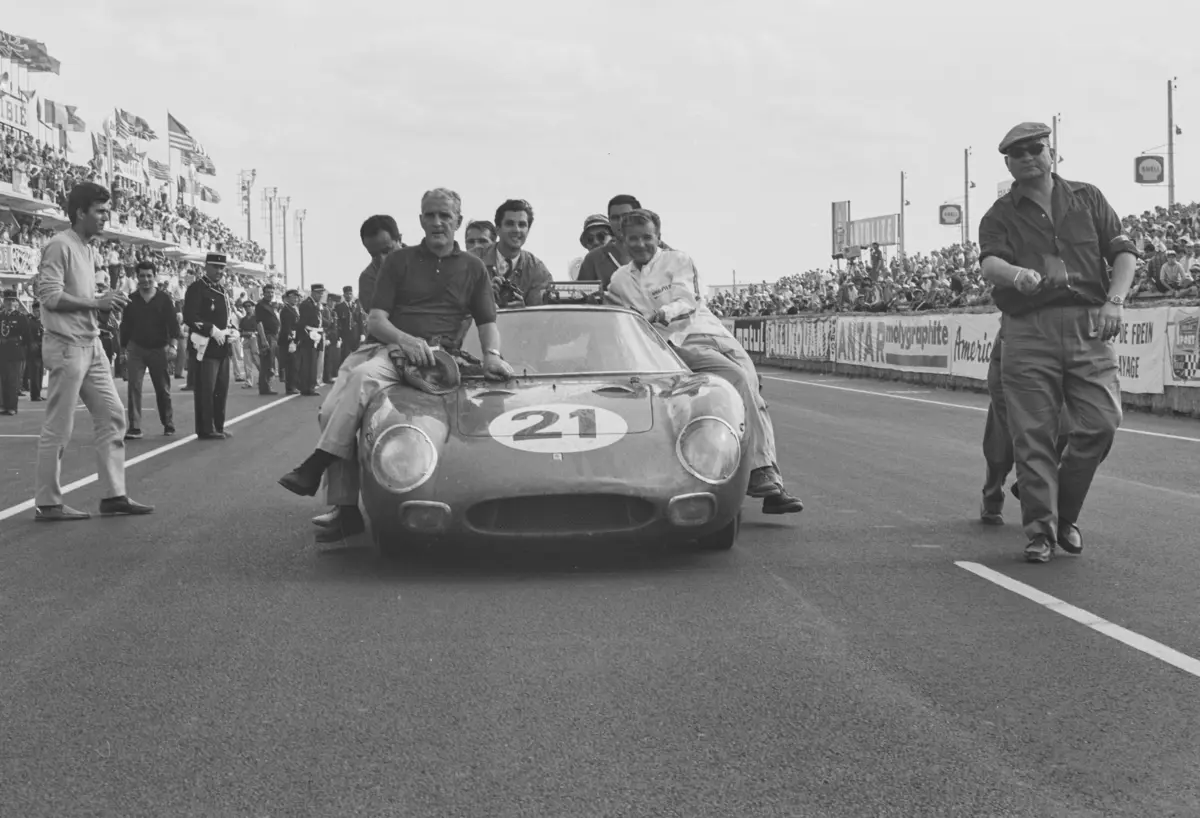
It's a remarkable footnote about a remarkable car. Chassis 5893 would go on to have other respectable results—9th overall at the 1966 Daytona Continental with Rindt and Bob Bondurant, 8th at the 1969 Le Mans 24 Hours, and 7th in the 1970 Daytona 24 Hours—followed by a second career on the concours field in the 21st century, during long-term ownership by the Indianapolis Motor Speedway Museum. But it will always be remembered for that blaze of glory in 1965: when Ferrari still reigned at Le Mans.

